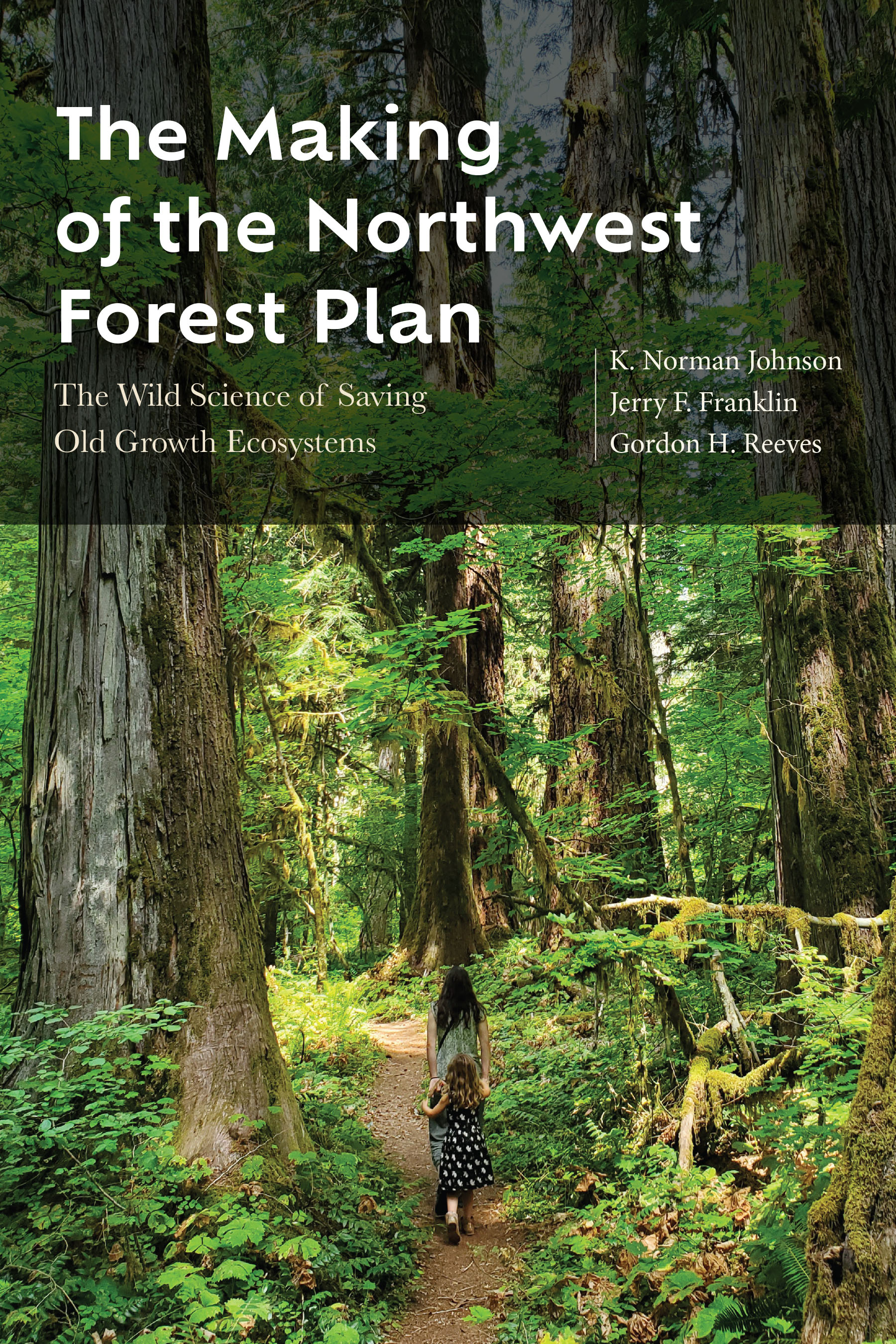
ISBN 9780870712258 (ebook)
The Making of the Northwest Forest Plan
K. Norman Johnson, Jerry F. Franklin, and Gordon H. Reeves
Tree sitters. Logger protests. Dying timber towns. An iconic species on the brink. The Timber Wars consumed the Pacific Northwest in the late 1980s and early 1990s and led political leaders to ask scientists for a solution. The Northwest Forest Plan was the result.
For most of the twentieth century, the central theme of federal forest management in the Pacific Northwest had been logging old-growth forests to provide a sustained yield of timber. During the 1970s and 1980s, however, studies by young scientists highlighted the destructive impact of that logging on northern spotted owls, salmon, and the old-growth ecosystem itself. Combining this new science with environmental laws like the Endangered Species Act, environmental activists obtained court injunctions to stop old-growth logging on federal land, setting off a titanic struggle to meet conservation imperatives while also enabling the timber harvests that provided employment for tens of thousands of people. That effort led to the creation of the Northwest Forest Plan, which sharply and abruptly shifted the goal of federal forest management toward conserving the species and ecosystems of old-growth forests and the streams that run through them.
In this book, three of the scientists who helped craft that change tell the story as they know it: the causes, development, adoption, and effects of the Northwest Forest Plan. The book also incorporates short commentaries and histories from key figures—including spotted owl expert Eric Forsman—and experiences from managers who implemented the plan as best they could. Legal expert Susan Jane M. Brown helped interpret court cases and Debora Johnson turned spatial data into maps. The final chapters cover the plan’s ongoing significance and recommendations for conserving forest and aquatic ecosystems in an era of megafires and climate change.
About the author
K. NORMAN JOHNSON is emeritus professor in the College of Forestry at Oregon State University.
Read more about this author
JERRY F. FRANKLIN is emeritus professor in the College of Environment, University of Washington.
Read more about this author
GORDON H. REEVES is a retired fish biologist, Pacific Northwest Research Station of the US Forest Service.
Read more about this author




